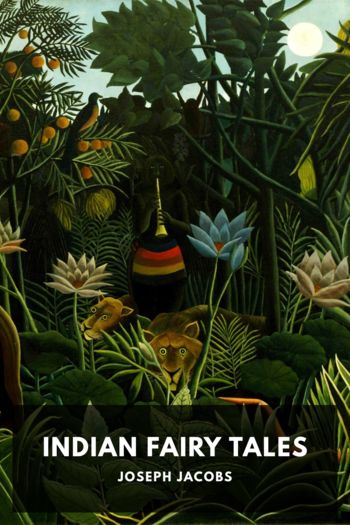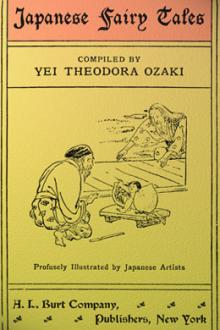Indian Fairy Tales by Joseph Jacobs (best books to read for students TXT) 📕

- Author: Joseph Jacobs
Book online «Indian Fairy Tales by Joseph Jacobs (best books to read for students TXT) 📕». Author Joseph Jacobs
I do not wish to be misunderstood. I do not hold with Benfey that all European folktales are derived from the Bidpai literature and similar literary products, nor with M. Cosquin that they are all derived from India. The latter scholar has proved that there is a nucleus of stories in every European land which is common to all. I calculate that this includes from 30 to 50 percent of the whole, and it is this common stock of Europe that I regard as coming from India mainly at the time of the Crusades, and chiefly by oral transmission. It includes all the beast tales and most of the drolls, but evidence is still lacking about the more serious fairy tales, though it is increasing with every fresh collection of folktales in India, the great importance of which is obvious from the above considerations.
In the following Notes I give, as on the two previous occasions, the source whence I derived the tale, then parallels, and finally remarks. For Indian parallels I have been able to refer to Major Temple’s remarkable Analysis of Indian Folktale incidents at the end of Wideawake Stories (pp. 386–436), for European ones to my alphabetical List of Incidents, with bibliographical references, in Transactions of Folklore Congress, 1892, pp. 87–98. My remarks have been mainly devoted to tracing the relation between the Indian and the European tales, with the object of showing that the latter have been derived from the former. I have, however, to some extent handicapped myself, as I have avoided giving again the Indian versions of stories already given in English Fairy Tales or Celtic Fairy Tales.
I The Lion and the CraneSource.—V Fausböll, “Five Jātakas,” Copenhagen, 1861, pp. 35–8, text and translation of the “Jāvasakuna Jātaka.” I have ventured to English Prof. Fausböll’s version, which was only intended as a “crib” to the Pali. For the omitted Introduction, see supra.
Parallels.—I have given a rather full collection of parallels, running to about a hundred numbers, in my Aesop, pp. 232–4. The chief of these are: (1) for the East, the Midrashic version (“Lion and Egyptian Partridge”), in the great Rabbinic commentary on Genesis (Bereshith-rabba, c. 64); (2) in classical antiquity, Phaedrus, I 8 (“Wolf and Crane”), and Babrius, 94 (“Wolf and Heron”), and the Greek proverb Suidas, II 248 (“Out of the Wolf’s Mouth”); (3) in the Middle Ages, the so-called Greek Aesop, ed. Halm, 276 b, really prose versions of Babrius and “Romulus,” or prose of Phaedrus, I 8, also the Romulus of Ademar (fl. 1030), 64; it occurs also on the Bayeux Tapestry, in Marie de France, 7, and in Benedict of Oxford’s “Mishle Shualim” (Heb.), 8; (4) Stainhöwel took it from the “Romulus” into his German Aesop (1480), whence all the modern European Aesops are derived.
Remarks.—I have selected “The Wolf and the Crane” as my typical example in my “History of the Aesopic Fable,” and can only give here a rough summary of the results I there arrived at concerning the fable, merely premising that these results are at present no more than hypotheses. The similarity of the Jataka form with that familiar to us, and derived by us in the last resort from Phaedrus, is so striking that few will deny some historical relation between them. I conjecture that the Fable originated in India, and came West by two different routes. First, it came by oral tradition to Egypt, as one of the Libyan Fables which the ancients themselves distinguished from the Aesopic Fables. It was, however, included by Demetrius Phalereus, tyrant of Athens, and founder of the Alexandrian library c. 300 BC, in his Assemblies of Aesopic Fables, which I have shown to be the source of Phaedrus’ Fables c. 30 AD Besides this, it came from Ceylon in the Fables of Kybises—i.e., Kasyapa the Buddha—c. 50 AD, was adapted into Hebrew, and used for political purposes, by Rabbi Joshua ben Chananyah in a harangue to the Jews c. 120 AD, begging them to be patient while within the jaws of Rome. The Hebrew form uses the lion, not the wolf, as the ingrate, which enables us to decide on the Indian provenance of the Midrashic version. It may be remarked that the use of the lion in this and other Jatakas is indirectly a testimony to their great age, as the lion has become rarer and rarer in India during historic times, and is now confined to the Gir forest of Kathiáwar, where only a dozen specimens exist, and are strictly preserved.
The verses at the end are the earliest parts of the Jataka, being in more archaic Pali than the rest: the story is told by the commentator (c. 400 AD) to illustrate them. It is probable that they





Comments (0)